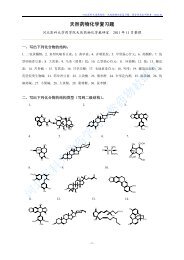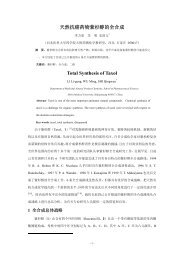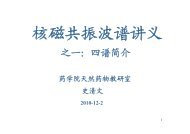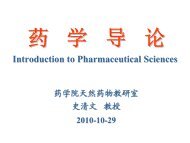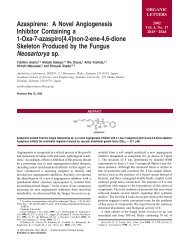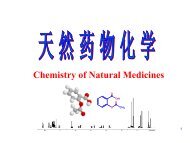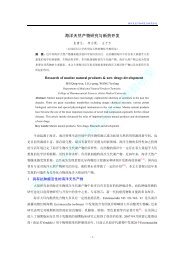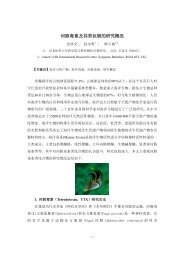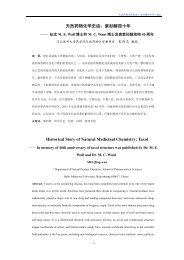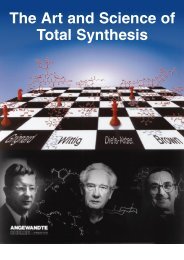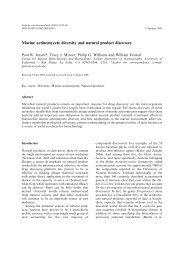Total Synthesis Highlights
Total Synthesis Highlights
Total Synthesis Highlights
Create successful ePaper yourself
Turn your PDF publications into a flip-book with our unique Google optimized e-Paper software.
The enantiomerically-pure aldehyde 14was prepared by adding dithiane to the<br />
commercially-available glycidyl tosylate 10. For the other half of 3, another syn-selective aldol<br />
condensation gave 12, which was carried on to the iodide 13. Reduction with t-butyl lithium,<br />
addition of the resulting organolithium to 11 and oxidation then gave the coupled ketone, which<br />
was homologated using the Petasis procedure to give 14.<br />
In fact, the sensitive disubstituted alkene of 14 turned out to not be stable to the subsequent AlCl 3<br />
coupling conditions, so the alkene and the secondary alcohol were protected together as the<br />
bromoether 15. Condensation of the derived enol ether 16 with the sulfone 2 in the presence of<br />
DTBMP (2,6-di-t-butyl-4-methylpyridine) then gave 17. Yamaguchi lactonization followed by<br />
regeneration of the alkene by zinc reduction completed the synthesis of 1.<br />
82. <strong>Synthesis</strong> of (+)-4,5-Deoxyneodolabelline<br />
The dolabellanes, represented by 3-hydroxydolabella-4(16), 7, 11(12)-triene-3,13-dione 1 and the<br />
neodolabellanes, represented by (+)-4,5-deoxyneodolabelline 2, are isolated from both terrestrial<br />
and marine sources. They show cytotoxic, antibiotic and antiviral activity. The recent synthesis of<br />
(+)-4,5-deoxyneodolabelline 2 by David Williams of Indiana University (J. Am. Chem. Soc., 2003,<br />
125, 1843.) highlights both the strengths and the challenges of the current state of the art in<br />
asymmetric synthesis.



